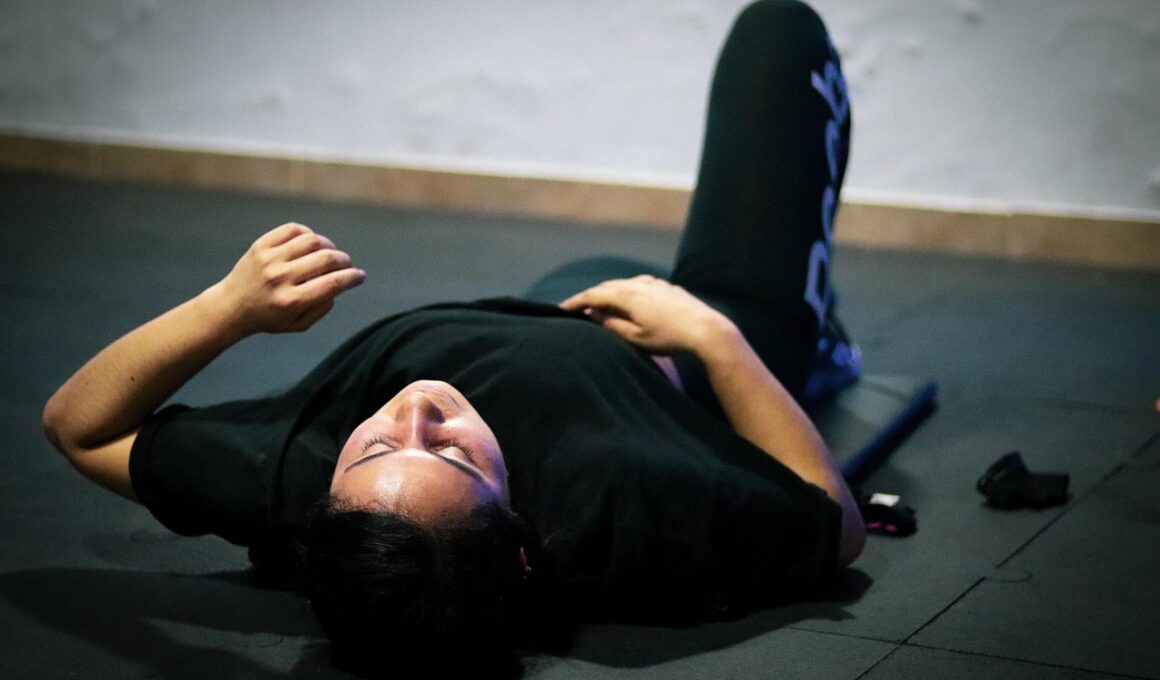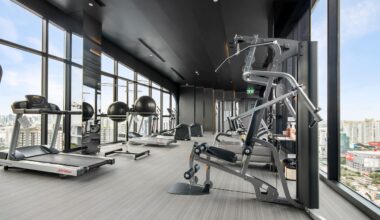Tracking Core Progress: The Best Apps for Monitoring Your Workouts
Core training focuses on strengthening your abdominal and back muscles, enhancing stability and overall fitness. To efficiently track progress, using specialized apps significantly helps. These applications enable users to log workouts, monitor repetitions, and measure performance over time, granting insight into personal development. Popular options include Fitbod, which tailors workouts based on your preferences while tracking core exercises. Another effective tool is MyFitnessPal, known primarily for nutrition logging but also valuable for workout progress. These platforms streamline your experience, making it easier to stay consistent and committed. Additionally, users can set specific goals, receive guidance on proper form, and even engage with a community for motivation. When selecting a core training app, consider factors like ease of use, available features, and compatibility with other devices. Tracking your core workouts allows for adjustments, ultimately leading to better performance. Therefore, take the time to find the right app fitting your personal needs. Using technology as a resource enhances your training, and these applications will aid you in achieving your fitness goals effectively.
Features to Look For in Core Training Apps
When reviewing core training apps, it’s essential to identify critical features that meet your workout needs. A user-friendly interface ensures seamless navigation, allowing you to concentrate on your core workouts without hurdles. Another crucial feature is customizable workout plans tailored to your individual fitness levels and goals, as different users have diverse requirements. In-app instructional videos demonstrate proper techniques, enhancing workout efficiency and preventing injuries, which is vital for core training success. Additionally, integration with wearables, such as smartwatches and fitness trackers, enables real-time tracking of heart rate and calories burned. Another aspect is performance analytics, allowing users to visually examine progress trends. Also, community features connecting users to fitness buddies provide essential encouragement and motivation, promoting accountability in training. By surrounding yourself with like-minded individuals, you foster a sense of belonging, making your fitness journey more enjoyable. The options available might cater to various interests, even offering gamification aspects that make workouts feel less mundane. These elements combined create a comprehensive training experience, ultimately leading to improved core strength and athletic performance.
Among the elite in core training applications is “Workout Trainer,” an app that provides a vast library of workouts focusing on the core. The app features guided instruction to perfect form, ensuring users are always performing safely and effectively. Further, it allows users to create their routines, providing additional flexibility. “Sworkit” is another recommended app, catering to users who prefer personalized workout plans while targeting specific goals such as core stability or strength. By using these apps, you access a plethora of exercises, promoting variety in your training regimen. Another strong contender is “StrongLifts 5×5,” which focuses on strength training but includes core workouts within its regimen. It emphasizes progressive overload, essential for muscle and strength gains. Using such applications can relieve the guesswork in building effective core training routines. Users can log each workout and monitor improvements, incentivizing progress with clear metrics. As technology continues evolving, apps like these constantly update their features, ensuring users have the best tools possible for achieving desired results. Put simply, choosing the right app may play a significant role in your core training success.
User Experience and Community Support
User experience is a significant consideration when choosing a core training app. Apps with responsive designs streamline workouts, allowing focus on movements over confusing layouts. Thus, a clean interface encourages better usage frequency and user satisfaction. Additionally, many fitness apps foster community engagement where users can share challenges, advice, and successes, creating a collective motivation loop. This social aspect not only provides encouragement but also inspires dedication as users interact. Motivational elements such as reminders and badges for achievements propel users to remain committed to their training. Another aspect to consider is the availability of customer support, whether through forums, FAQs, or direct contact options, enhancing user experience further. Social media integration allows sharing accomplishments, broadening the sense of community outside the app. Users can showcase their journey and seek support from friends and family on different platforms. Moreover, regular app updates improve functionality and user satisfaction, ensuring users stay engaged with the latest performance metrics and workout enhancements. Prioritizing user experience ultimately aids in creating enjoyable and consistent core training practice.
Comparing the pricing options across core training apps is essential in determining the right fit. Many applications operate on a freemium model, offering basic features for free while charging for premium access. For users seeking extraordinary features, investing in a paid subscription may be worthwhile, which typically includes more sophisticated workout plans and personalized coaching. It is also essential to evaluate whether a free trial is available, allowing you to explore the features before committing financially. Some apps even offer discounts for annual subscriptions, making long-term use more budget-friendly. Assessing these factors ensures you make the best decision suited to your budget while maximizing the effectiveness of your core training. Furthermore, some apps may have specialized plans for different experience levels, from beginners to advanced users, catering to diverse fitness journeys. It allows users to progress at their own pace without feeling overwhelmed. Thus, users should always seek an app that meets their needs, considering both features and pricing, to empower their fitness endeavors effectively. Investing in the best app not only helps fitness performance but motivates overall wellness.
Integrating Nutrition Tracking with Core Training
Many people overlook the necessity of nutrition in their training journey. Selecting an app that also includes nutrition tracking can significantly enhance core training effectiveness. Proper nutrition fuels workouts, optimizes recovery, reduces injuries, and promotes overall health. Some apps even provide nutritional advice and meal plans to align with fitness goals, ensuring you maximize potential gains in strength and muscle definition. By combining workout tracking and nutrition management, the total approach exacerbates the benefits of core training. Some of these apps use tools for goal-setting regarding weight management and caloric intake. Monitoring these aspects provides holistic insight into your health and fitness. Understanding the relationship between nutrition and fitness empowers users to make educated choices. Moreover, many apps may incorporate recipes and grocery lists, simplifying meal preparation and fostering better eating habits. Utilizing these features encourages users to adopt a healthier lifestyle overall. Users can truly maximize results through integrated tracking systems, leading to remarkable physical changes. Nutrition shouldn’t be an afterthought; it plays a crucial role in achieving optimal fitness levels with consistent progress.
Leveraging workout data to maintain motivation is critical in any fitness regimen, especially for core training. Many core workout apps present user data visually, showcasing metrics such as time spent or progress tracked over time. By visualizing improvements via graphs or achievement badges, users stay driven to continue their training sessions. Additionally, post-workout summaries provide essential feedback, allowing users to reflect on their day’s performance and areas needing improvement. Regular check-ins and assessments can help maintain accountability, as users can identify where they are excelling and where attention may be required. Furthermore, taking advantage of reminders and notifications aids in keeping workouts on users’ to-do lists. Establishing a consistent core training routine is easier when guided by motivated insights from the apps. This continuous engagement increases the likelihood of achieving goals, promoting a sense of accomplishment when benchmarks are reached. Gamifying the experience further elevates motivation levels, turning workouts into enjoyable challenges. Encouragement and inspiration become part of each training session, granting deeper commitment to achieving core training objectives overall. An immersed user experience signifies long-term success in fitness journeys.


